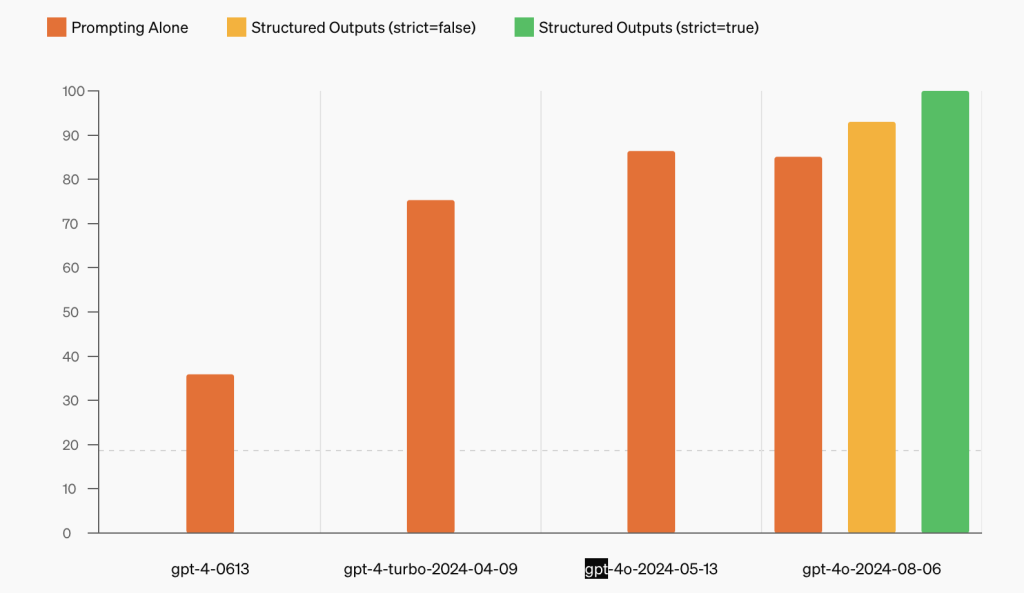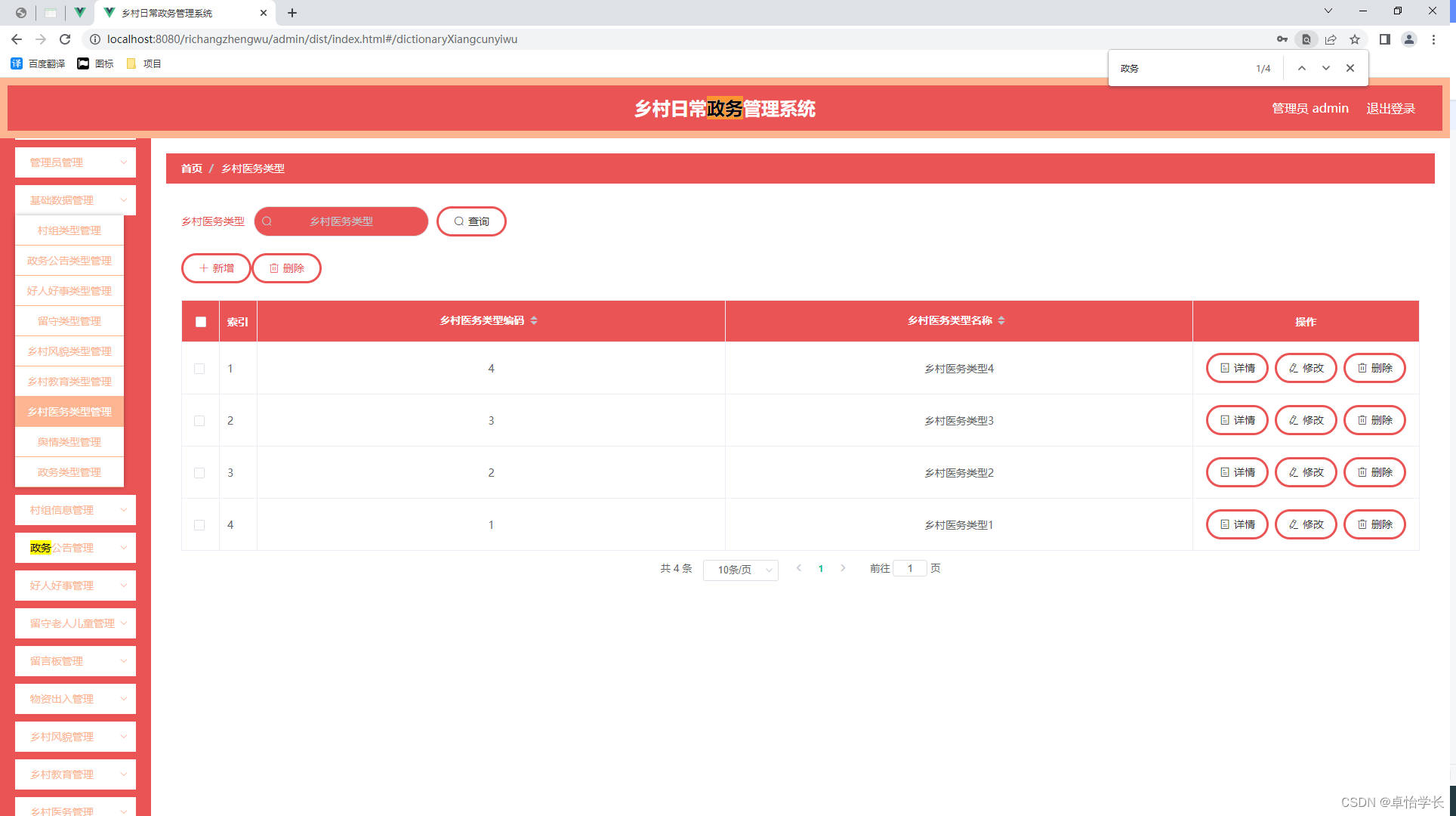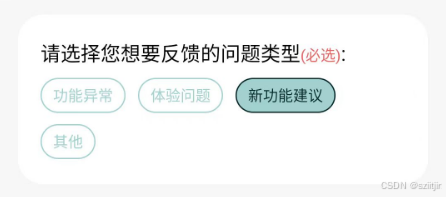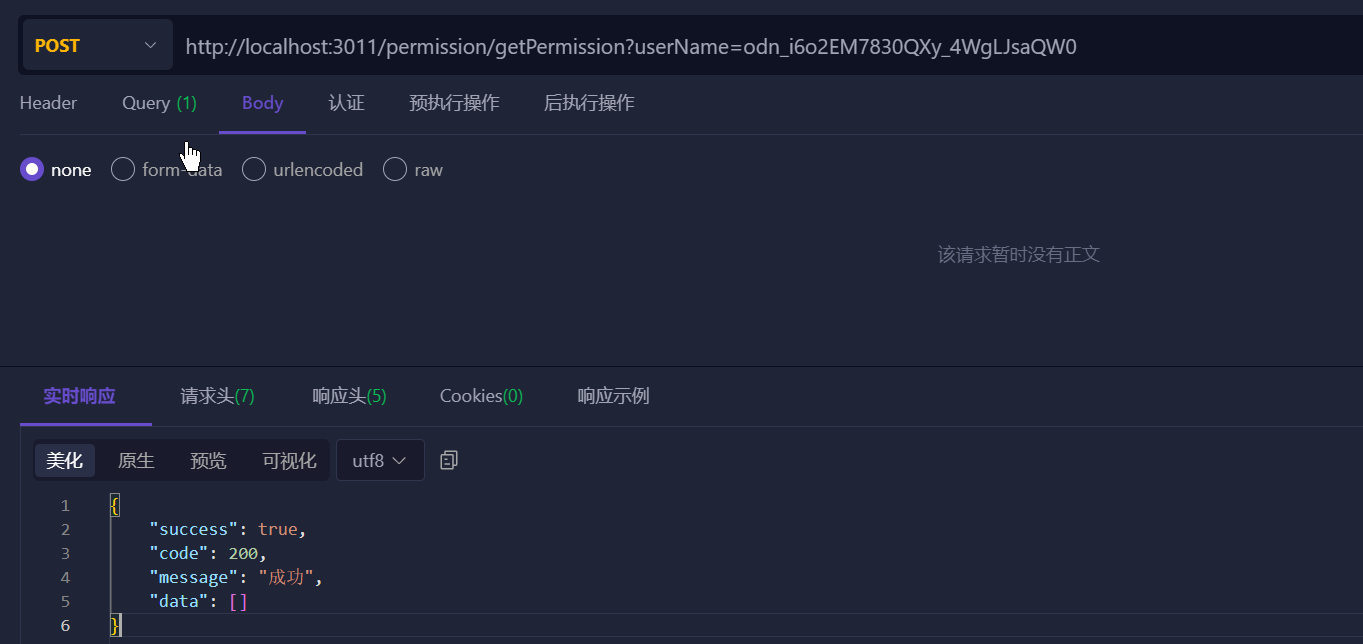每周跟踪AI热点新闻动向和震撼发展 想要探索生成式人工智能的前沿进展吗?订阅我们的简报,深入解析最新的技术突破、实际应用案例和未来的趋势。与全球数同行一同,从行业内部的深度分析和实用指南中受益。不要错过这个机会,成为AI领域的领跑者。点击订阅,与未来同行! 订阅:https://rengongzhineng.io/

去年在DevDay大会上,OpenAI介绍了JSON模式,这个工具对于开发者来说是构建可靠应用程序的有用模块。虽然JSON模式提高了模型生成有效JSON输出的可靠性,但并不能保证模型的响应会符合特定的架构。今天,OpenAI推出了一项新功能——API中的结构化输出,旨在确保模型生成的输出完全符合开发者提供的JSON架构。
从非结构化输入生成结构化数据是现代应用程序中人工智能的核心用例之一。开发者使用OpenAI API构建功能强大的助手,这些助手可以通过函数调用获取数据并回答问题,提取结构化数据进行数据输入,并构建多步代理工作流,使大型语言模型能够采取行动。开发者长期以来一直通过开源工具、提示和反复重试请求来解决大型语言模型在这方面的局限性,确保模型输出符合其系统所需的格式。结构化输出通过约束OpenAI模型以符合开发者提供的架构,并训练模型更好地理解复杂的架构,解决了这一问题。
在对复杂JSON架构遵循性的评估中,OpenAI的新模型gpt-4o-2024-08-06在结构化输出方面得分为100%,而gpt-4-0613得分不到40%。

有了结构化输出,gpt-4o-2024-08-06在评估中实现了100%的可靠性,完美匹配输出架构。
如何使用结构化输出
OpenAI在API中以两种形式引入结构化输出:
- 函数调用:通过工具启用的结构化输出可以在函数定义中设置strict: true来实现。这一功能适用于所有支持工具的模型,包括gpt-4-0613和gpt-3.5-turbo-0613及其后续版本。当启用结构化输出时,模型输出将匹配提供的工具定义。
请求:
POST /v1/chat/completions
{
"model": "gpt-4o-2024-08-06",
"messages": [
{
"role": "system",
"content": "You are a helpful assistant. The current date is August 6, 2024. You help users query for the data they are looking for by calling the query function."
},
{
"role": "user",
"content": "look up all my orders in may of last year that were fulfilled but not delivered on time"
}
],
"tools": [
{
"type": "function",
"function": {
"name": "query",
"description": "Execute a query.",
"strict": true,
"parameters": {
"type": "object",
"properties": {
"table_name": {
"type": "string",
"enum": ["orders"]
},
"columns": {
"type": "array",
"items": {
"type": "string",
"enum": [
"id",
"status",
"expected_delivery_date",
"delivered_at",
"shipped_at",
"ordered_at",
"canceled_at"
]
}
},
"conditions": {
"type": "array",
"items": {
"type": "object",
"properties": {
"column": {
"type": "string"
},
"operator": {
"type": "string",
"enum": ["=", ">", "<", ">=", "<=", "!="]
},
"value": {
"anyOf": [
{
"type": "string"
},
{
"type": "number"
},
{
"type": "object",
"properties": {
"column_name": {
"type": "string"
}
},
"required": ["column_name"],
"additionalProperties": false
}
]
}
},
"required": ["column", "operator", "value"],
"additionalProperties": false
}
},
"order_by": {
"type": "string",
"enum": ["asc", "desc"]
}
},
"required": ["table_name", "columns", "conditions", "order_by"],
"additionalProperties": false
}
}
}
]
}输出:
{
"table_name": "orders",
"columns": ["id", "status", "expected_delivery_date", "delivered_at"],
"conditions": [
{
"column": "status",
"operator": "=",
"value": "fulfilled"
},
{
"column": "ordered_at",
"operator": ">=",
"value": "2023-05-01"
},
{
"column": "ordered_at",
"operator": "<",
"value": "2023-06-01"
},
{
"column": "delivered_at",
"operator": ">",
"value": {
"column_name": "expected_delivery_date"
}
}
],
"order_by": "asc"
}- 响应格式的新选项:开发者现在可以通过json_schema提供JSON Schema,这是response_format参数的新选项。当模型不调用工具而是以结构化方式响应用户时,这一功能非常有用。这一功能适用于OpenAI最新的GPT-4o模型:gpt-4o-2024-08-06和gpt-4o-mini-2024-07-18。当提供response_format并设置strict: true时,模型输出将匹配提供的架构。
请求:
POST /v1/chat/completions
{
"model": "gpt-4o-2024-08-06",
"messages": [
{
"role": "system",
"content": "You are a helpful math tutor."
},
{
"role": "user",
"content": "solve 8x + 31 = 2"
}
],
"response_format": {
"type": "json_schema",
"json_schema": {
"name": "math_response",
"strict": true,
"schema": {
"type": "object",
"properties": {
"steps": {
"type": "array",
"items": {
"type": "object",
"properties": {
"explanation": {
"type": "string"
},
"output": {
"type": "string"
}
},
"required": ["explanation", "output"],
"additionalProperties": false
}
},
"final_answer": {
"type": "string"
}
},
"required": ["steps", "final_answer"],
"additionalProperties": false
}
}
}
}输出:
{
"steps": [
{
"explanation": "Subtract 31 from both sides to isolate the term with x.",
"output": "8x + 31 - 31 = 2 - 31"
},
{
"explanation": "This simplifies to 8x = -29.",
"output": "8x = -29"
},
{
"explanation": "Divide both sides by 8 to solve for x.",
"output": "x = -29 / 8"
}
],
"final_answer": "x = -29 / 8"
}安全的结构化输出
安全性是OpenAI的首要任务——新的结构化输出功能将遵循现有的安全政策,并且仍然允许模型拒绝不安全的请求。为了简化开发,API响应中增加了一个新的refusal字符串值,允许开发者以编程方式检测模型是否生成了拒绝,而不是匹配架构的输出。当响应不包含拒绝且模型的响应未被提前中断时(如由finish_reason指示),则模型的响应将可靠地产生匹配提供架构的有效JSON。
原生SDK支持
OpenAI的Python和Node SDK已更新,提供对结构化输出的原生支持。提供工具或响应格式的架构与提供Pydantic或Zod对象一样简单,SDK将处理将数据类型转换为支持的JSON架构,自动将JSON响应反序列化为类型化的数据结构,并在出现拒绝时解析它们。
以下示例显示了使用函数调用的结构化输出的原生支持。
Python:
from enum import Enum
from typing import Union
from pydantic import BaseModel
import openai
from openai import OpenAI
class Table(str, Enum):
orders = "orders"
customers = "customers"
products = "products"
class Column(str, Enum):
id = "id"
status = "status"
expected_delivery_date = "expected_delivery_date"
delivered_at = "delivered_at"
shipped_at = "shipped_at"
ordered_at = "ordered_at"
canceled_at = "canceled_at"
class Operator(str, Enum):
eq = "="
gt = ">"
lt = "<"
le = "<="
ge = ">="
ne = "!="
class OrderBy(str, Enum):
asc = "asc"
desc = "desc"
class DynamicValue(BaseModel
):
column_name: str
class Condition(BaseModel):
column: str
operator: Operator
value: Union[str, int, DynamicValue]
class Query(BaseModel):
table_name: Table
columns: list[Column]
conditions: list[Condition]
order_by: OrderBy
client = OpenAI()
completion = client.beta.chat.completions.parse(
model="gpt-4o-2024-08-06",
messages=[
{
"role": "system",
"content": "You are a helpful assistant. The current date is August 6, 2024. You help users query for the data they are looking for by calling the query function.",
},
{
"role": "user",
"content": "look up all my orders in may of last year that were fulfilled but not delivered on time",
},
],
tools=[
openai.pydantic_function_tool(Query),
],
)
print(completion.choices[0].message.tool_calls[0].function.parsed_arguments)Node:
import OpenAI from 'openai';
import z from 'zod';
import { zodFunction } from 'openai/helpers/zod';
const Table = z.enum(['orders', 'customers', 'products']);
const Column = z.enum([
'id',
'status',
'expected_delivery_date',
'delivered_at',
'shipped_at',
'ordered_at',
'canceled_at',
]);
const Operator = z.enum(['=', '>', '<', '<=', '>=', '!=']);
const OrderBy = z.enum(['asc', 'desc']);
const DynamicValue = z.object({
column_name: z.string(),
});
const Condition = z.object({
column: z.string(),
operator: Operator,
value: z.union([z.string(), z.number(), DynamicValue]),
});
const QueryArgs = z.object({
table_name: Table,
columns: z.array(Column),
conditions: z.array(Condition),
order_by: OrderBy,
});
const client = new OpenAI();
const completion = await client.beta.chat.completions.parse({
model: 'gpt-4o-2024-08-06',
messages: [
{ role: 'system', content: 'You are a helpful assistant. The current date is August 6, 2024. You help users query for the data they are looking for by calling the query function.' },
{ role: 'user', content: 'look up all my orders in may of last year that were fulfilled but not delivered on time' }
],
tools: [zodFunction({ name: 'query', parameters: QueryArgs })],
});
console.log(completion.choices[0].message.tool_calls[0].function.parsed_arguments);响应格式的原生支持也可用。
Python:
from pydantic import BaseModel
from openai import OpenAI
class Step(BaseModel):
explanation: str
output: str
class MathResponse(BaseModel):
steps: list[Step]
final_answer: str
client = OpenAI()
completion = client.beta.chat.completions.parse(
model="gpt-4o-2024-08-06",
messages=[
{"role": "system", "content": "You are a helpful math tutor."},
{"role": "user", "content": "solve 8x + 31 = 2"},
],
response_format=MathResponse,
)
message = completion.choices[0].message
if message.parsed:
print(message.parsed.steps)
print(message.parsed.final_answer)
else:
print(message.refusal)Node:
import OpenAI from 'openai';
import { zodResponseFormat } from 'openai/helpers/zod';
import { z } from 'zod';
const Step = z.object({
explanation: z.string(),
output: z.string(),
});
const MathResponse = z.object({
steps: z.array(Step),
final_answer: z.string(),
});
const client = new OpenAI();
const completion = await client.beta.chat.completions.parse({
model: 'gpt-4o-2024-08-06',
messages: [
{
"role": "system",
"content": "You are a helpful math tutor. Only use the schema for math responses.",
},
{ "role": "user", "content": "solve 8x + 3 = 21" },
],
response_format: zodResponseFormat(MathResponse, 'mathResponse'),
});
const message = completion.choices[0]?.message;
if (message?.parsed) {
console.log(message.parsed.steps);
console.log(message.parsed.final_answer);
} else {
console.log(message.refusal);
}其他使用案例
开发者经常使用OpenAI的模型生成结构化数据以满足各种使用需求。以下是一些额外的示例:
根据用户意图动态生成用户界面
例如,开发者可以使用结构化输出创建代码或用户界面生成应用程序。以下所有示例都使用相同的response_format,可以根据用户输入生成不同的用户界面。
系统:
{
"type": "div",
"label": "",
"children": [
{
"type": "header",
"label": "",
"children": [
{
"type": "div",
"label": "Green Thumb Gardening",
"children": [],
"attributes": [{ "name": "className", "value": "site-title" }]
},
{
"type": "div",
"label": "Bringing Life to Your Garden",
"children": [],
"attributes": [{ "name": "className", "value": "site-tagline" }]
}
],
"attributes": [{ "name": "className", "value": "header" }]
},
{
"type": "section",
"label": "",
"children": [
{
"type": "div",
"label": "",
"children": [
{
"type": "div",
"label": "About Us",
"children": [
{
"type": "div",
"label": "At Green Thumb Gardening, we specialize in transforming your outdoor spaces into beautiful, thriving gardens. Our team has decades of experience in horticulture and landscape design.",
"children": [],
"attributes": [
{ "name": "className", "value": "about-description" }
]
}
],
"attributes": [{ "name": "className", "value": "about-section" }]
}
],
"attributes": [{ "name": "className", "value": "content" }]
}
],
"attributes": [{ "name": "className", "value": "about-container" }]
},
{
"type": "section",
"label": "",
"children": [
{
"type": "div",
"label": "",
"children": [
{
"type": "div",
"label": "Our Services",
"children": [
{
"type": "div",
"label": "Garden Design",
"children": [],
"attributes": [
{ "name": "className", "value": "service-item" }
]
},
{
"type": "div",
"label": "Plant Care & Maintenance",
"children": [],
"attributes": [
{ "name": "className", "value": "service-item" }
]
},
{
"type": "div",
"label": "Seasonal Cleanup",
"children": [],
"attributes": [
{ "name": "className", "value": "service-item" }
]
},
{
"type": "div",
"label": "Custom Landscaping",
"children": [],
"attributes": [
{ "name": "className", "value": "service-item" }
]
}
],
"attributes": [{ "name": "className", "value": "services-list" }]
}
],
"attributes": [{ "name": "className", "value": "content" }]
}
],
"attributes": [{ "name": "className", "value": "services-container" }]
}
],
"attributes": [{ "name": "className", "value": "landing-page" }]
}将最终答案与支持推理或额外评论分开
给模型一个单独的思维链字段可以提高最终响应的质量。
请求:
{
"model": "gpt-4o-2024-08-06",
"messages": [
{
"role": "system",
"content": "You are a helpful assistant"
},
{
"role": "user",
"content": "9.11和9.9哪个更大?"
}
],
"response_format": {
"type": "json_schema",
"json_schema": {
"name": "reasoning_schema",
"strict":
true,
"schema": {
"type": "object",
"properties": {
"reasoning_steps": {
"type": "array",
"items": {
"type": "string"
},
"description": "推理步骤,得出最终结论。"
},
"answer": {
"type": "string",
"description": "最终答案,考虑推理步骤。"
}
},
"required": ["reasoning_steps", "answer"],
"additionalProperties": false
}
}
}
}输出:
{
"reasoning_steps": [
"第一步是比较数字9.11和9.9。",
"这两个数字都有相同的整数部分,即9。",
"要比较小数部分,请将它们转换为相同的小数位数。",
"9.11有两位小数:它是9.11。",
"9.9有一位小数:可以写成9.90。",
"现在,通过查看小数部分来比较9.11和9.90。",
"比较11和90。",
"90大于11,所以9.90大于9.11。"
],
"answer": "9.9大于9.11。"
}从非结构化数据中提取结构化数据
例如,指示模型从会议记录中提取待办事项、截止日期和负责人。
请求:
POST /v1/chat/completions
{
"model": "gpt-4o-2024-08-06",
"messages": [
{
"role": "system",
"content": "从会议记录中提取行动项、截止日期和负责人。"
},
{
"role": "user",
"content": "...会议记录在此..."
}
],
"response_format": {
"type": "json_schema",
"json_schema": {
"name": "action_items",
"strict": true,
"schema": {
"type": "object",
"properties": {
"action_items": {
"type": "array",
"items": {
"type": "object",
"properties": {
"description": {
"type": "string",
"description": "行动项描述。"
},
"due_date": {
"type": ["string", "null"],
"description": "行动项的截止日期,如果没有指定可以为null。"
},
"owner": {
"type": ["string", "null"],
"description": "负责行动项的负责人,如果没有指定可以为null。"
}
},
"required": ["description", "due_date", "owner"],
"additionalProperties": false
},
"description": "会议中的行动项列表。"
}
},
"required": ["action_items"],
"additionalProperties": false
}
}
}
}输出:
{
"action_items": [
{
"description": "协作优化路径规划算法",
"due_date": "2024-06-30",
"owner": "Jason Li"
},
{
"description": "联系行业合作伙伴获取更多数据集",
"due_date": "2024-06-25",
"owner": "Aisha Patel"
},
{
"description": "探索替代的LIDAR传感器配置并报告结果",
"due_date": "2024-06-27",
"owner": "Kevin Nguyen"
},
{
"description": "安排集成导航系统的扩展压力测试",
"due_date": "2024-06-28",
"owner": "Emily Chen"
},
{
"description": "修复错误后重新测试系统并更新团队",
"due_date": "2024-07-01",
"owner": "David Park"
}
]
}工作原理
OpenAI采用了两步方法来提高与JSON Schema匹配的模型输出的可靠性。首先,训练了最新的模型gpt-4o-2024-08-06,以理解复杂的架构并最佳地生成匹配它们的输出。然而,模型行为本质上是非确定性的——尽管这一模型的性能有所提高(在基准测试中得分为93%),但它仍未达到开发者构建强大应用程序所需的可靠性。因此,OpenAI还采用了一种确定性、工程性的方法来约束模型的输出,以实现100%的可靠性。
限制与注意事项
使用结构化输出时需要注意以下几点:
- 结构化输出仅允许JSON Schema的一个子集,详细信息请参见文档。这有助于确保最佳性能。
- 第一次API响应使用新架构时会有额外的延迟,但随后的响应将快速且无延迟惩罚。因为在第一次请求期间,OpenAI需要处理架构并生成可高效重用的缓存结构。
- 如果模型选择拒绝不安全的请求,它可能会无法遵循架构。如果选择拒绝,返回消息将包含refusal布尔值以指示这一点。
- 如果生成达到max_tokens或其他停止条件之前,模型可能无法遵循架构。
- 结构化输出并不能防止所有类型的模型错误。例如,模型仍可能在JSON对象的值中犯错(例如,在数学方程中出错)。如果开发者发现错误,建议在系统指令中提供示例或将任务拆分为更简单的子任务。
- 结构化输出与并行函数调用不兼容。生成并行函数调用时,可能不会匹配提供的架构。设置parallel_tool_calls: false以禁用并行函数调用。
- 提供的JSON架构不符合零数据保留(ZDR)资格。
可用性
结构化输出现已在API中普遍可用。
通过函数调用实现的结构化输出适用于所有支持函数调用的API模型。这包括OpenAI最新的模型(gpt-4o,gpt-4o-mini),所有gpt-4-0613及以后和gpt-3.5-turbo-0613及其后续版本,以及任何支持函数调用的微调模型。此功能适用于聊天补全API、助手API和批量API。通过函数调用实现的结构化输出也兼容视觉输入。
通过响应格式实现的结构化输出适用于gpt-4o-mini和gpt-4o-2024-08-06及基于这些模型的任何微调模型。此功能适用于聊天补全API、助手API和批量API。通过响应格式实现的结构化输出也兼容视觉输入。
通过切换到新的gpt-4o-2024-08-06,开发者在输入方面节省50%($2.50/百万输入tokens),在输出方面节省33%($10.00/百万输出tokens),相较于gpt-4o-2024-05-13。
要开始使用结构化输出,请查看OpenAI的文档。(https://platform.openai.com/docs/guides/structured-outputs)



















